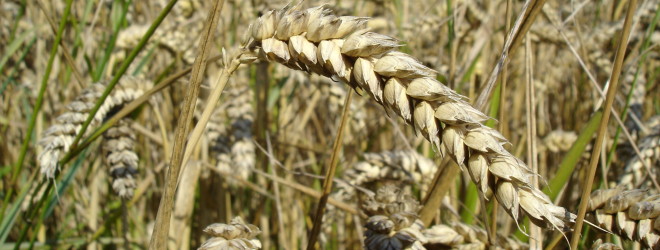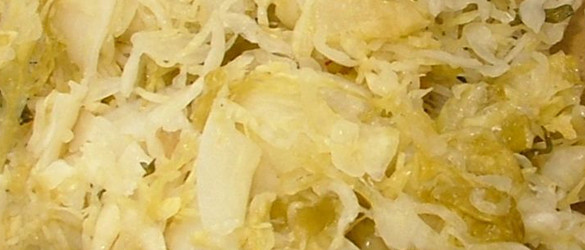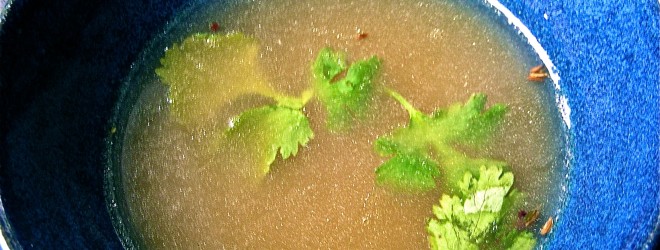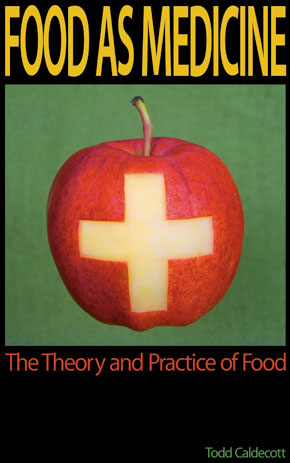Gluten intolerance is not only a ubiquitous issue, but an entire industry of “gluten-free” foods has been created around it. Here are some of my thoughts on the issue of gluten, taken from Food As Medicine: The Theory and Practice of Food. pages 51-54. If you would like to make a traditional Indian flatbread that reduces gluten to negligible, please review my recipe for sourdough roti, thepla and parantha.
Over thousands of years of experimentation we have learned to process cereals to limit the negative effects of antinutrient factors, including grinding, germination (p. 116), fermentation (p. 127) and cooking. While innovations in modern technology would have us dispense with many of these methods, history demonstrates that when we fail to observe traditional measures there can be dramatic repercussions. Pellagra arose as a mysterious disease in the South-Eastern US during the early 1900’s, just a few years after cornmeal had been introduced as food to feed the poorer classes. Pellagra ravages the body causing skin lesions, chronic diarrhea and dementia, killing the victim in just a few years. It took almost 50 years before a scientist discovered that pellagra was caused by a niacin (vitamin B3) deficiency. Years later it was discovered that the traditional Aztec practice of processing corn with an alkali such as wood ash or lime (called nixtamalization) releases niacin trapped in the outer shell of the kernel.
While pellagra is now a rare occurrence, its underlying cause finds resonance in a whole new epidemic of gluten intolerance. Gluten is a naturally occurring protein found in the seeds of grass species including wheat, spelt, kamut, rye and barley. When ground into a flour gluten gives these cereals a glue-like consistency that allows the dough to rise, trapping the gasses released by the leavening agent like a balloon fills with air. Etymologically the word ‘gluten’ is derived from the Latin word ‘glutinis’ meaning ‘glue’, and it is perhaps no surprise that the sticky properties of gluten are used to good effect in other applications such as paper-making, wallpaper paste, paper-mâché and play-dough.
Given the sticky, glue-like property of gluten and flour it is easy to appreciate that gluten is very difficult to digest. At the extreme end are those who suffer from celiac disease, and exhibit a profoundly negative response to gluten consumption, manifesting characteristic symptoms including abdominal pain, steatorrhea, constipation and malabsorption. Although less than 1% of the population is diagnosed with overt celiac disease, researchers suspect gluten intolerance may be much more common than previously thought,[1] affecting up to 29% of the US population.[2] Beyond the effect on digestion, gluten intolerance is associated with a number of other issues including:
- weight loss[3]
- anemia[4]
- fatigue[5]
- dermatitis herpetiformis[6]
- psoriasis[7]
- autoimmune thyroiditis[8]
- type 1 diabetes[9]
- uveitis[10]
- Addison’s disease[11]
- infertility[12]
- inflammatory bowel disease[13]
- autoimmune liver disorders[14], [15]
- pancreatitis[16]
- peripheral neuropathy[17]
- dementia[18]
- epilepsy[19], [20]
- anxiety[21]
- migraine[22]
- fibromyalgia[23]
- arthritis[24], [25]
- osteoporosis[26]
- cancer[27], [28]
The typical advice given to confirmed celiacs and those suspected of gluten intolerance is to avoid gluten-containing foods such as bread, pasta, pastries, muffins and breakfast cereal. Gluten however is hidden in many foods, used by industry as an adhesive and excipient in processed and prepared meats, processed cheeses, condiments, sweeteners and candy, as well as breads “made without flour”. Given its prevalence in the food supply gluten avoidance can be a difficult task for the consumer, especially outside of big cities and major centers, and itself can be a cause of chronic anxiety.[29]
Given the association of gluten intolerance with chronic disease it is not surprising that the popularity of gluten-free products has exploded in the marketplace. Manufacturers have found clever ways to use non-gluten flours such as rice, buckwheat, corn, sorghum, teff, tapioca, arrowroot, potato, coconut, soy bean, guar bean and locust bean to make familiar products. While many of these alternatives do seem to lessen the symptoms associated with gluten intolerance, the question arises if we are substituting one problem for another. Very few of these alternatives were traditionally milled into a fine flour and used in baked goods, and many have the same types of antinutrient factors and immune sensitizers as gluten-containing cereals such as wheat.
It could be that much of the issue with the widespread gluten intolerance that seems to have evolved from thin air, like corn and pellagra, is in large part an artifact of not observing traditional methods of food preparation. Traditional methods of bread making, like the nixtamalization of corn, is an involved process that includes sprouting, roasting and stone-grinding the cereal to a coarse flour. The key element is the incorporation of a sourdough culture comprised of naturally occurring bacteria and yeasts. Apart from their use as leavening agents, these organisms ferment starches and produce enzymes in the process that effectively hydrolyze the gluten, turning it into easily digestible proteins.[30] Clinical research shows that when sourdough is used in the preparation of baked goods it is surprisingly well tolerated among patients with celiac disease.[31] Making real sourdough bread however is an artisan skill that requires time and effort to practice (see page 128).
References
[1] Harrison MS, Wehbi M, Obideen K. 2007. Celiac disease: more common than you think. Cleve Clin J Med. 74(3):209-15.
[2] Fine K. 2003. Early Diagnosis Of Gluten Sensitivity: Before the Villi are Gone. Available from http://www.finerhealth.com/Essay
[3] Nelsen DA Jr. 2002. Gluten-sensitive enteropathy (celiac disease): more common than you think. Am Fam Physician. 66(12):2259-66.
[4] Ibid.
[5] Ibid.
[6] Ibid.
[7] Birkenfeld S, Dreiher J, Weitzman D, Cohen AD. 2009. Coeliac disease associated with psoriasis. Br J Dermatol. 161(6):1331-4.
[8] Ch’ng CL, Jones MK, Kingham JG. 2007. Celiac disease and autoimmune thyroid disease. Clin Med Res. 5(3):184-92.
[9] Bhadada SK, Kochhar R, Bhansali A, Dutta U, Kumar PR, Poornachandra KS, Vaiphei K, Nain CK, Singh K. 2011. Prevalence and clinical profile of celiac disease in type 1 diabetes mellitus in north India. J Gastroenterol Hepatol. 26(2):378-381.
[10] Krifa F, Knani L, Sakly W, Ghedira I, Essoussi AS, Boukadida J, Ben Hadj Hamida F. 2010. Uveitis responding on gluten free diet in a girl with celiac disease and diabetes mellitus type 1. Gastroenterol Clin Biol. 34(4-5):319-20.
[11] Elfström P, Montgomery SM, Kämpe O, Ekbom A, Ludvigsson JF. 2007. Risk of primary adrenal insufficiency in patients with celiac disease. J. Clin. End. & Metab. 92(9): 3595
[12] Collin P, Vilska S, Heinonen PK, Hällström O, Pikkarainen P. 1996. Infertility and coeliac disease. Gut. 39(3):382–4.
[13] Leeds JS, Höroldt BS, Sidhu R, et al. 2007. Is there an association between coeliac disease and inflammatory bowel diseases? A study of relative prevalence in comparison with population controls. Scand. J. Gastroenterol. 42(10):1214–20
[14] Niveloni S, Dezi R, Pedreira S, Podestá A, Cabanne A, Vazquez H, Sugai E, Smecuol E, Doldan I, Valero J, Kogan Z, Boerr L, Mauriño E, Terg R, Bai JC. 1998. Gluten sensitivity in patients with primary biliary cirrhosis. Am J Gastroenterol. 93(3):404-8.
[15] Volta U, Rodrigo L, Granito A, et al. 2002. Celiac disease in autoimmune cholestatic liver disorders. Am. J. Gastroenterol. 97(10):2609–13
[16] Patel RS, Johlin FC, Murray JA. 1999. Celiac disease and recurrent pancreatitis. Gastrointest. Endosc. 50(6): 823–7
[17] Hadjivassiliou M, Rao DG, Wharton SB, Sanders DS, Grünewald RA, Davies-Jones AG. 2010. Sensory ganglionopathy due to gluten sensitivity. Neurology. 75(11):1003-8.
[18] Hu WT, Murray JA, Greenaway MC, Parisi JE, Josephs KA. 2006. Cognitive impairment and celiac disease. Arch Neurol. 63(10):1440-6.
[19] Canales P, Mery VP, Larrondo FJ, Bravo FL, Godoy J. 2006. Epilepsy and celiac disease: favorable outcome with a gluten-free diet in a patient refractory to antiepileptic drugs. Neurologist. 12(6):318-21.
[20] Mavroudi A, Karatza E, Papastavrou T, Panteliadis C, Spiroglou K. 2005. Successful treatment of epilepsy and celiac disease with a gluten-free diet. Pediatr Neurol. 33(4):292-5.
[21] Addolorato G, Capristo E, Ghittoni G, et al. 2001. Anxiety but not depression decreases in coeliac patients after one-year gluten-free diet: a longitudinal study. Scand. J. Gastroenterol. 36(5): 502–6
[22] Gabrielli M, Cremonini F, Fiore G, Addolorato G, Padalino C, Candelli M, De Leo ME, Santarelli L, Giacovazzo M, Gasbarrini A, Pola P, Gasbarrini A. 2003. Association between migraine and Celiac disease: results from a preliminary case-control and therapeutic study. Am J Gastroenterol. 98(3):625-9.
[23] Wallace DJ, Hallegua DS. 2004. Fibromyalgia: the gastrointestinal link. Curr Pain Headache Rep. 8(5):364-8.
[24] Sökjer M, Jónsson T, Bödvarsson S, Jónsdóttir I, Valdimarsson H. 1995. Selective increase of IgA rheumatoid factor in patients with gluten sensitivity. Acta Derm Venereol. 75(2): 130–2
[25] Al-Mayouf SM, Al-Mehaidib AI, Alkaff MA. 2003. The significance of elevated serologic markers of celiac disease in children with juvenile rheumatoid arthritis. Saudi J Gastroenterol. 9(2):75-8.
[26] Kemppainen T, Kröger H, Janatuinen E, Arnala I, Kosma VM, Pikkarainen P, Julkunen R, Jurvelin J, Alhava E, Uusitupa M. 1999. Osteoporosis in adult patients with celiac disease. Bone. 24(3):249-55.
[27] Holmes GK, Stokes PL, Sorahan TM, Prior P, Waterhouse JA, Cooke WT. 1976. Coeliac disease, gluten-free diet, and malignancy. Gut. 17(8): 612–9
[28] Ferguson A, Kingstone K. 1996. Coeliac disease and malignancies. Acta Paediatr Suppl. 412:78-81.
[29] Häuser W, Janke KH, Klump B, Gregor M, Hinz A. 2010. Anxiety and depression in adult patients with celiac disease on a gluten-free diet. World J Gastroenterol. 16(22):2780-7.
[30] De Angelis M, Cassone A, Rizzello CG, Gagliardi F, Minervini F, Calasso M, Di Cagno R, Francavilla R, Gobbetti M. 2010. Mechanism of degradation of immunogenic gluten epitopes from Triticum turgidum L. var. durum by sourdough lactobacilli and fungal proteases. Appl Environ Microbiol. 76(2):508-18.
[31] Di Cagno R, De Angelis M, Auricchio S, Greco L, Clarke C, De Vincenzi M, Giovannini C, D’Archivio M, Landolfo F, Parrilli G, Minervini F, Arendt E, Gobbetti M. 2004. Sourdough bread made from wheat and nontoxic flours and started with selected lactobacilli is tolerated in celiac sprue patients. Appl Environ Microbiol. 70(2):1088-96.
Comments are now closed for this post. Please email your comments to info@foodasmedicine.ca.




